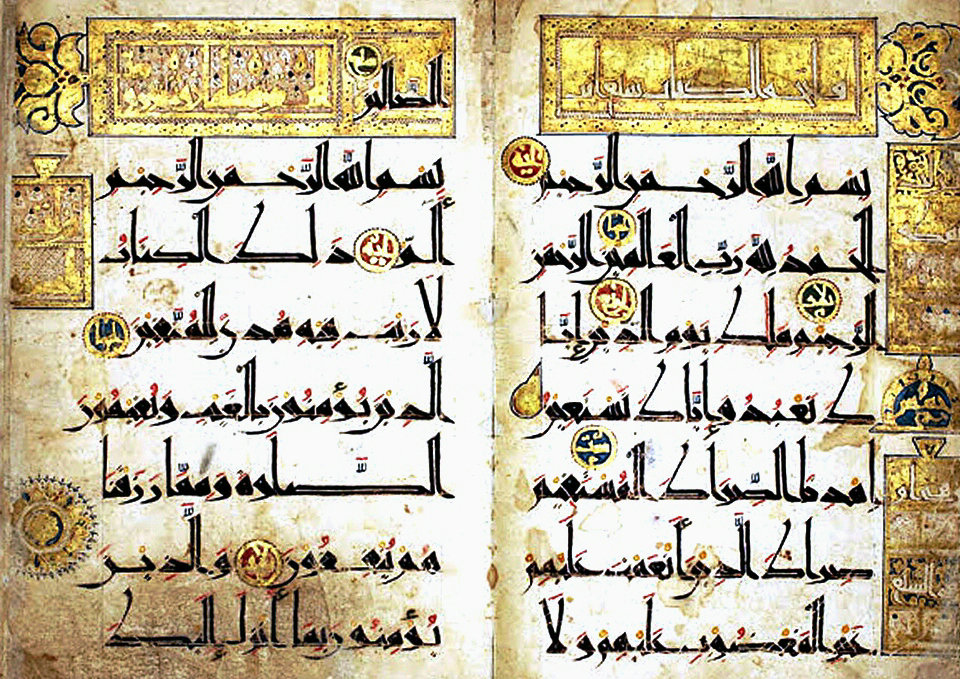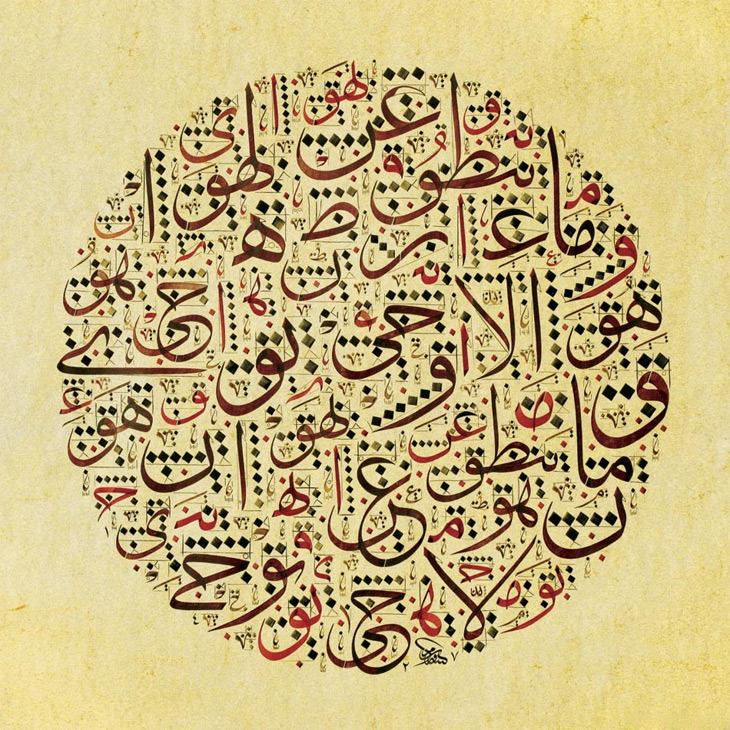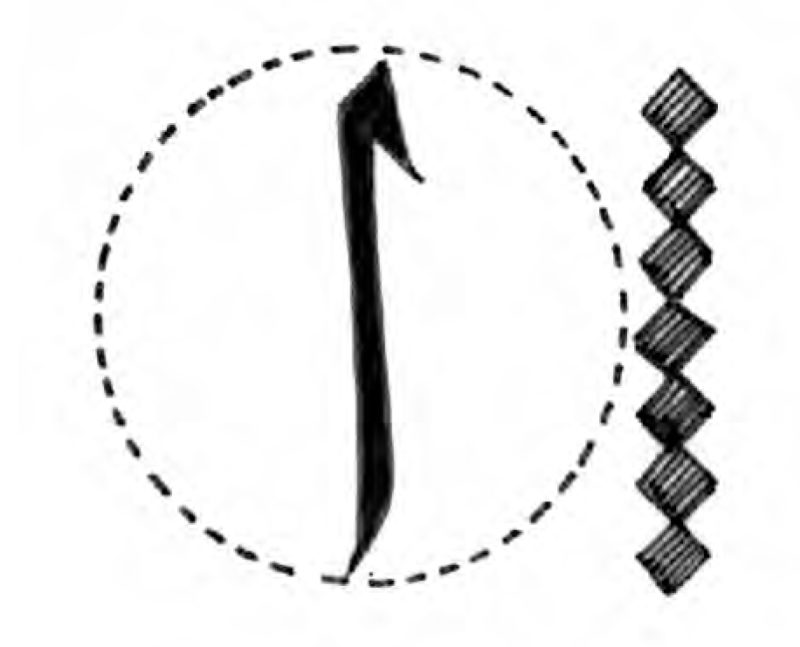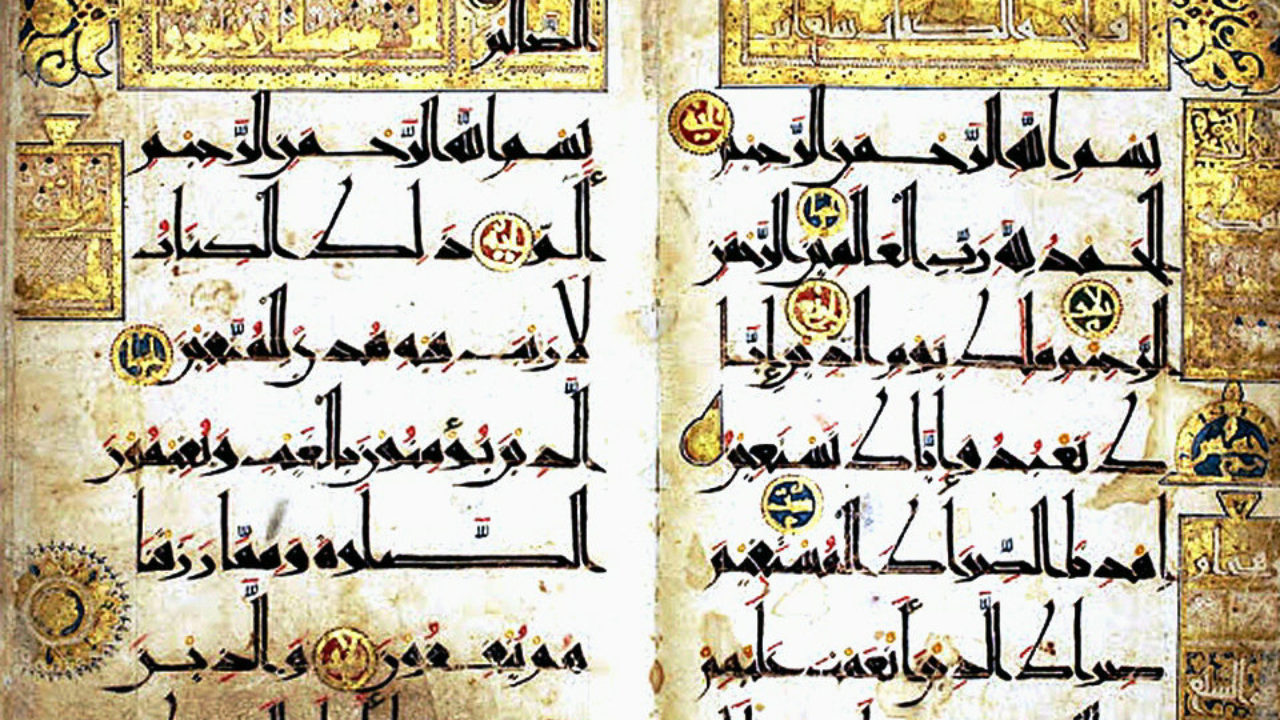Arabic calligraphy seen in Islamic tile is often used to convey the message of the Quran but Islamic tile calligraphy is also used to transmit other religious texts praise for rulers poems and aphorisms. When was Muslim calligraphy invented.

Arabic Islamic Calligraphy Royalty Free Illustration Islamic Calligraphy Islamic Art Calligraphy Arabic Calligraphy Design
Arabic calligraphy is the central original Islamic art which our ancestors mastered.

DID ISLAMIC INVENTED CALLIGRAPHY. Using black ink and gold leaves to write on parchment or paper scribes employed an angled alphabet called Kuffi and created stunning masterpieces that appeared in 8th century and reached their apex in 10th century. This was beneficial for both the captives and the Muslims. Here is an example of modern Islamic calligraphy.
In order to set governmental or ministerial documents apart from ordinary documents they made this script the official script of the Ottoman sultans. Islamic Calligraphy is nearly as old as Islam itself. While traditional calligraphy involves a nib nib holder and ink Arabic calligraphy pens are much more commonly made from reeds and rigid wood.
As the Met Museum points out Islamic tile calligraphy was not merely functional. The Fihrist by Ibn al-Nadim d. The earliest surviving examples of Arabic before Islam are inscriptions on stone.
Many modern renditions are even made in the shapes of animals or objects like ships. Below are some of the most common implements and supplies used in Arabic calligraphy. Diwani is a cursive style of Arabic calligraphy developed during the reign of the early Ottoman Turks in the 16th and early 17th centuries.
Diwani is a cursive style of Arabic calligraphy developed during the reign of the early Ottoman Turks in the 16th and early 17th centuries. However Ibn Muqla did establish systematic rules and proportions for shaping the letters which use alif as the x-height. It was invented by Housam Roumi and reached its height of popularity under Süleyman I the Magnificent 15201566.
They perfected its scripts designs and decorations turning it into a great and eternal art. The history of Islam concerns the political social economic and cultural developments of Islamic civilizationMost historians believe that Islam originated in Mecca and Medina at the start of the 7th century CE. The most talented of calligraphers attained honorable positions as scribes in the Imperial Palace or as teachers of Imperial rulers.
Spaces between letters are often narrow and lines ascend upwards from right to left. When was Islamic calligraphy invented. While todays designs are sophisticated and innovative they all began in the 11th century when the designs were more basic but still beautiful.
Calligraphy is a stylized rendition of phrases and words in a way that makes them into a beautiful piece of artwork. Regarding this who invented Islamic calligraphy. Around 1500 Turkish calligraphers invented a style called Diwani ministerial which like the Persian Shekasteh was difficult to read.
The Vizier Ibn Muqla 886940 of the Abbasid court Ibn al-Bawwab and Yakut al-Mustasimi of Amasya d. Diwani is a cursive style of Arabic calligraphy developed during the reign of the early Ottoman Turks in the 16th and early 17th centuries. The foundation of Islamic calligraphy was laid down by the creative genius of three great calligraphers from Baghdad.
Muslims regard Islam as a return to the original faith of the prophets such as Adam Noah Abraham Moses David Solomon and Jesus and with the submission Islam to the will of God. Calligraphy had a strong aesthetic appeal as well. By signing up youll get thousands of step-by-step solutions to your homework questions.
Who started Islamic calligraphy. Calligraphy in a mosque setting is specifically used to reference holy excerpts from both the Quran and Muhammads teachings. Ibn Muqla is highly regarded in Muslim sources on calligraphy as the inventor of the naskh style although this seems to be erroneous.
Spaces between letters are often narrow and lines ascend upwards from right to left. It is significant that the Quran the book of Gods revelations to the Prophet Muhammad was transmitted in Arabic and that inherent within the Arabic script is the potential for developing a. Throughout history Arabic calligraphy has reflected the essence of our Arab and Islamic art mirroring its spirit and nature and representing its progress.
The most common pen for Arabic calligraphy is the Qalam pen which is made from a cut dried reed. Islamic architecture varies vastly across the scope of the world. The Prophet sa told them that they would be freed if they each taught ten Muslim children to read and write.
What does the Quran say about art. Writing was very important during the early years of the evolution of Islam. It was invented by Housam Roumi and reached its height of popularity under Süleyman I the Magnificent 15201566.
It was invented by Housam Roumi and reached its height of popularity under Süleyman I the Magnificent 15201566. Calligraphy is the most highly regarded and most fundamental element of Islamic art. Pioneers of Islamic Calligraphy and Writing.
The Arabic script was evolved probably by the 6th century ce from Nabataean a dialect of Aramaic current in northern Arabia. Variation of the naskh includes. Sometimes this calligraphy may just look like it.
With the introduction of Islam another element that appeared was the introduction of calligraphy into the carpets. These references are one of the few religious connections architects include within their work. The earliest Islamic calligraphy is found in highly decorated manuscripts of Quran.
995 records the names of calligraphers who worked in the Umayyad and Abbasid periods and both coins and the inscriptions on the first example of Islamic architecture the Dome of the Rock erected in Jerusalem by the Umayyad caliph Abd al-Malik in 692 show that from earliest times Umayyad calligraphers applied such aesthetic principles as balance symmetry elongation and stylization to transform ordinary writing into calligraphy. Some of the captives of the Battle of Badr could not afford to pay ransom to be freed but they could read and write.

حروف خط سنبلي Calligraphy Words Arabic Calligraphy Art Calligraphy Art

Al Fatiha The Opener Islamic Art Islamic Paintings Islamic Art Calligraphy

Isr Readers P Referred Articles Kufic Ancient And Modern From Calligraphy To Typography Http Rcweekly Reasonedcomme Calligraphy Typography Islamic Art

Pin On Geography History Literature Contributions Of The Muslim World

Islamic Calligraphy Hisour Hi So You Are

History Of Calligraphy Islam Ru

Abstract Painting Wahuwa Ala Kulli Shai In Qadeer 572 3 By Mawra Tahreem Islamic Art Calligraphy Islamic Calligraphy Painting Arabic Calligraphy Painting

Arabic Calligraphy The Essential Islamic Art Part 2 2

Sini Is A Style Developed In China 1

ل ا ا ل ہ ا ل ا ا ن ت س ب ح ان ک ا ن ی ک ن ت م ن الظ ال م ی ن Arabic Calligraphy Art Islamic Calligraphy Calligraphy Art

Quran Basmala Islam Arabic Calligraphy Allah Arabic Leaf Text Logo Png Basmala Islamic Art Calligraphy Symbols Of Islam

Desertrose Allah Calligraphy Art Lukisan Huruf Seni Kaligrafi Buku Mewarnai

The History Of Islamic Calligraphy Education Asian Art Museum

No Victor But Allah No Conquerer But Allah A Big Arab Lie Invented When Arabs Were Conquer Digital Calligraphy Islamic Calligraphy Islamic Quotes Wallpaper

Pin By Saleh Souzanchi On Urdu Language Urdu Calligraphy Calligraphy How To Write Calligraphy





ShubhanALLAH